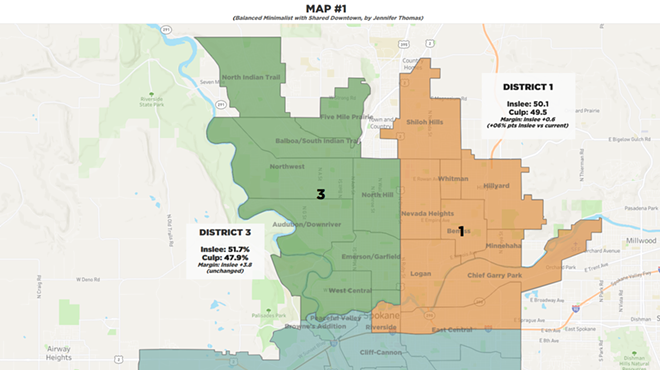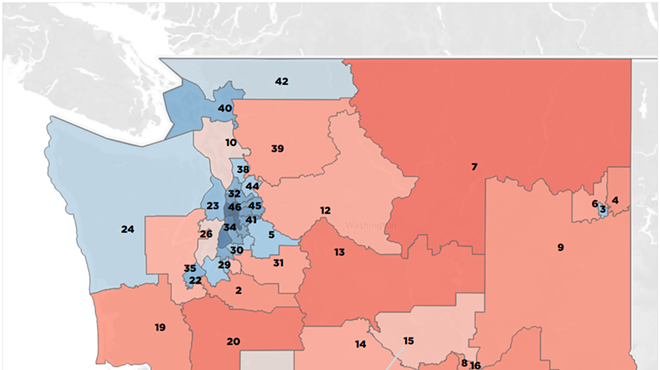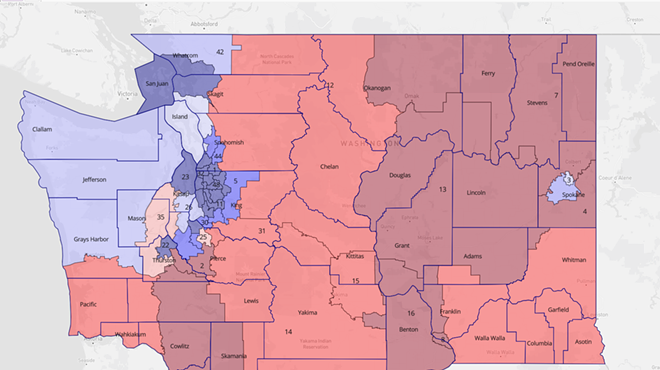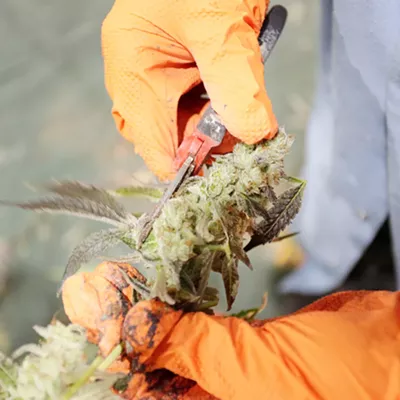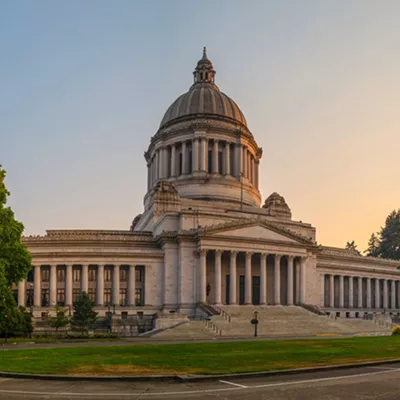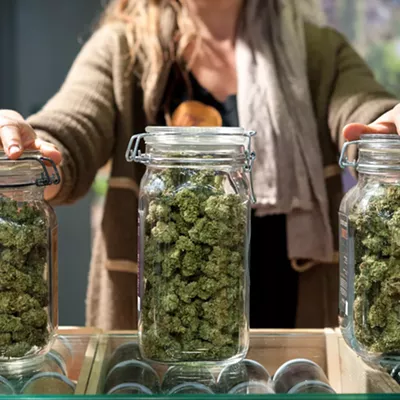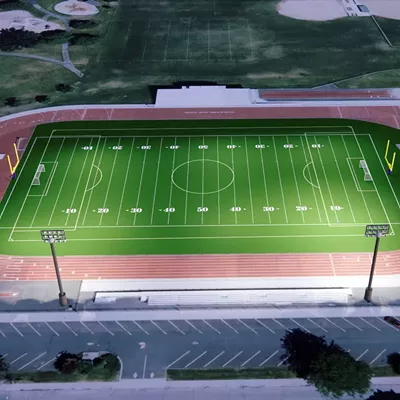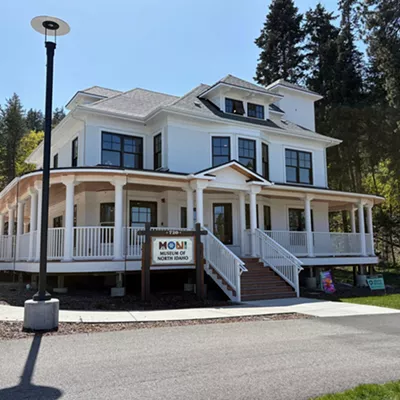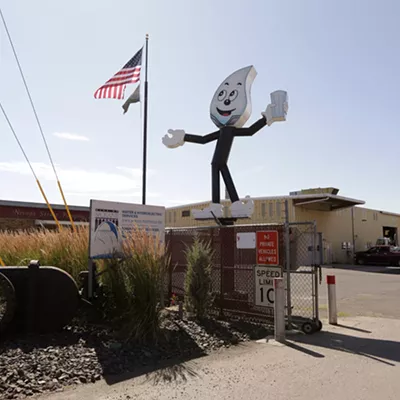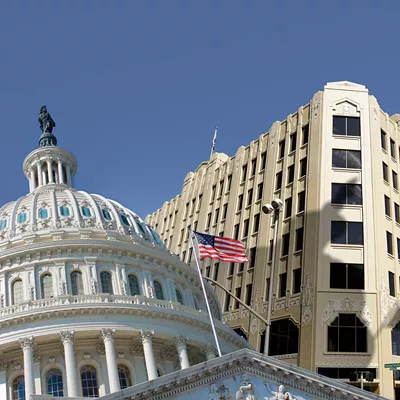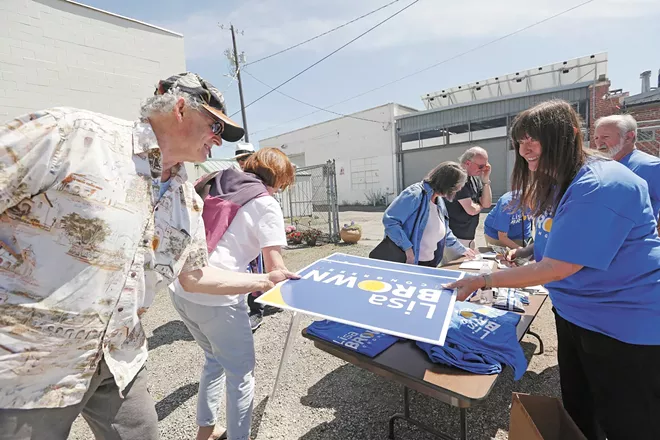
Last year, Zack Zappone was a political unknown. His opponent, Republican state Rep. Mike Volz, had the advantage of being the incumbent and wasn't weighed down by major controversy or scandal. And Zappone was running in the 6th Legislative District, which starts with a crescent of Spokane suburbs, stretches though Cheney to the Lincoln County border, and hadn't elected a Democrat in a decade.
"Zack came out of the clear blue," says Jack Donahue, the Spokane Democrats' chair of the 6th District. "He literally registered on the last day."
But he still came within 4 percentage points of winning. Meanwhile, Joe Biden, thanks to suburban ticket-splitters, actually won the district by 4 percentage points in 2020.
And just two years earlier, Dave Wilson, a moderate Democrat with much stronger name recognition, had come within a mere 700 votes of beating Republican Jenny Graham. Lisa Brown, the congressional candidate challenging Republican Congresswoman Cathy McMorris Rodgers, won the 6th Legislative District by an even tighter margin that year (though she ultimately fell short in other areas in her loss to McMorris Rodgers).
To Donahue, all these tight races were more evidence of just how close his district was to finally voting for Democrats.
"People hoped and hoped," Donahue says. "We're virtually there, we're on the edge, we're about to break through..."
And as Republicans and Democrats have started to battle over the once-in-a-decade redistricting process, he hoped the borders of the 6th could be redrawn in a way that would give Democrats an even better chance of winning. But if there's anything the 6th specializes in, it's crushing Democratic hopes.
Last week, representatives from both political parties released their proposed maps. But the designs from Democratic redistricting commission members Brady Walkinshaw and April Sims, if adopted, might effectively hand control of the district to Republicans for the foreseeable future.
"Either of them would decimate the South Hill... We would be set back at least another 10 years," Donahue says. "No amount of growth is going to overcome [the loss of] 10,000 blue voters."
Their maps make the district roughly 6 to 8 points more Republican. Biden, Inslee and Brown would all have lost the district handily.
Ironically, only one map still has Biden winning the 6th District, and it's the one drawn by Republican redistricting commission member Joe Fain.
"Locally, there's no question that Democrats think that the 6th is important and there's opportunity in the 6th," says Zappone.
The question is whether state Democrats still think the same.
Donahue says he had heard rumblings that the proposed maps would be disappointing.
"We were mentally preparing ourselves for it," he says.
This has all happened before.
Before 2006, the 6th hadn't had a single Democratic legislator since the days of FDR and the New Deal. But that year, with Democratic voters riding a national backlash against George W. Bush, the 66-year Republican grip on the district was broken in two out of three seats.
Then came the Tea Party wave of 2010. That year, Democrats did try to fight for the 6th, attempting to defend state Sen. Chris Marr against a challenge mounted by former U.S. State Department adviser Michael Baumgartner.
"At the time, it was the most expensive race in state history in which a challenger beat an incumbent," says Baumgartner.
Sims, who spent years union organizing before joining the state redistricting commission, remembers mobilizing union members to rally for Marr.
"I remember back when the 6th District was a little more of a swing district and a little more competitive," she says. But ultimately, the Marr race wasn't particularly close. Baumgartner beat him by over 6 percentage points.
When it came time for the parties to redraw the legislative district's map in 2012, Republicans and Democrats chose a design that added Cheney to the 6th, but swapped deep blue parts of West Central and the South Hill into the already-Democratic 3rd District.
And yet, with time, Democrats began closing the gap, Donahue says.
"We've been pushing hard to make the 6th competitive," Donahue says. Growth did most of the work. As more people moved into the area, coming from places like Portland and Seattle, he says, they were more liberal. Take the Biden-supporting precincts in the Eagle Ridge development in southwest Spokane, for example.
"Ten years ago that would have been pink at best," Donahue says.
It's not hard to draw a map where the Democrats have a much better chance of winning the 6th District — the Inlander generated a hypothetical district map relatively quickly that had Biden beating Trump in the 6th by 13 points and Gov. Jay Inslee beating Loren Culp by 8 points.
But there's a big catch. There's only one source of blue votes nearby — the 3rd District, where House Majority Whip Marcus Riccelli and Senate Majority Leader Andy Billig are stationed. Crank up the blue in the 6th, and the blue in the 3rd quickly starts to fade. By the time you turn the 6th into a reliably Democratic district, the 3rd has become a swing district.
And in a bad year — and if Joe Biden's poll numbers stay as low as they are, Democrats could have a very bad 2022 — being in a swing district could mean incumbents like Billig lose their jobs.
The proposed Democratic maps don't take that risk, choosing to make the 3rd more Democratic.
"Instead of opting to play offense and trying to make the 6th more competitive, we're electing to play defense and defend the 3rd — and keep it as the sole blue outpost in all of Eastern Washington," Donahue says.
But Sims says that kind of political calculation — "looking at this and thinking, 'How do I draw this map, so that I can engineer election outcomes'" — wasn't how she saw her purpose on the commission.
Instead, Sims says, her focus was on "keeping communities together whenever possible."
Because the Seattle-area population had grown so much faster in the past decade, the districts in Spokane had to get wider to make sure each legislator still represented a roughly equal number of people. She focused on keeping the boundaries of the 3rd entirely inside the city of Spokane.
"The byproduct of that, I suppose, is that it impacted the Democratic performance in the 6th District," Sims says.
Similarly, Senate Democrats' representative on the commission, Brady Walkinshaw, writes in a statement that he was responding to local feedback in designing his map, not looking at political metrics.
"In our public outreach meetings, people from Spokane advocated for getting rid of the 'Pac-Man' shape of the 6th and unifying South Hill in one district," he writes.
But across the nation, cities are getting ever bluer, and rural areas are getting deeper red. Focus on keeping like-minded communities together and you're a lot more likely to get districts that veer to one extreme or another.
"To put every person who thinks a certain way, to put a box around them and call it a district, that gets you exactly what we've seen back in D.C. that's been so disastrous," says Fain, the Senate Republicans' representative on the commission. "They don't have to serve as representatives, all they have to serve is mouthpieces for wildly lopsided districts."
Fain says there's a lot he's willing to compromise on, but he'll "put down the red line here by saying that the final map must have many legitimately competitive districts."
Caleb Heimlich, chair of the Washington State Republican Party, argues that with 49 districts in the state, Democrats "drew 30 safe Democratic districts, and 16 safe Republican districts. That is terrible for the people of Washington state."
Democrats, meanwhile, see the Republicans' talk about "competition" as just an excuse to draw maps that skew rightward.
"There's nothing in the [state law] about valuing 'competitiveness,'" Washington Democratic Party chair Tina Podlodowski wrote in an initial press release. She revised the statement — saying an "early draft" had been "inadvertently sent" — after people pointed out that the law actually did include a section explicitly commanding the redistricting commission to "encourage electoral competition."
Democratic objections to Fain, however, go beyond the specifics of his redistricting proposals: Shortly after Republicans appointed him to the position, Podlodowski signed a letter asking him to resign from the commission, referencing a woman who publicly accused Fain of rape in 2018.
Fain stresses to the Inlander that the alleged victim has never brought her allegations to the police and that he was the first to request the Legislature investigate the charges. After Fain lost that cycle's re-election and Senate Republicans pushed back against the Democrats' slate of possible investigators, however, Senate Majority Leader Billig suspended the investigation.
The 6th District on Fain's map is an unwieldy one: It stretches across the entirety of Lincoln County, sheers off a piece of Browne's Addition near downtown Spokane, then continues through southern Spokane County all the way to the Idaho-Washington border. But it also happens to be the only one where Democrats might still stand a chance of competing.
"You hold enough moderates, who are more to the middle, you'd probably prevail," Donahue says.
And that's exactly Fain's intention: "I want more swing districts because I want more moderates to be elected to the Legislature," he says.
But there's a reason why Democrats are distrustful of supposed "swing districts."
"A 50-50 Biden/Trump district is not a good district for legislative Democrats," says Alex Bond, spokesman for the Washington State Democratic Party. "That's just a political reality."
The state's voters are a lot more willing to vote for the Democrats nationally, but Republicans locally.
Still, Bond says, "the Democratic Party is very interested in competing in Spokane."
But by "compete," he doesn't mean pouring money into legislative races. He's talking about, say, competing in some of the state's new county commissioner districts or in the presidential election.
Zappone is already running for Spokane City Council this year. As for Donahue, if either of the Democratic map proposals gets enacted, he says, he'll be "formally, powerless to help."
Under both proposed Democratic maps, Donahue — the 6th District chair — would be living in the 3rd. ♦




